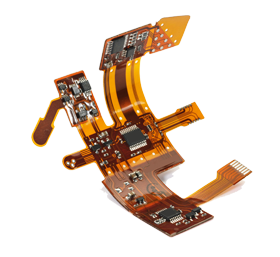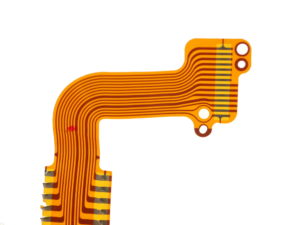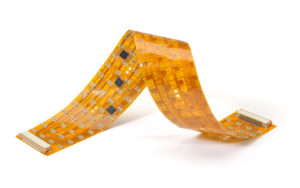Understanding Flexible Circuits: Applications and Advantages
Flexible circuits, also known as flex circuits or flex PCBs, are widely used as connectors in applications where flexibility, space savings, or construction constraints limit the use of traditional rigid circuit boards or hand wiring. These circuits are designed to bend, twist, and fold, making them ideal for compact, lightweight, and dynamic electronic systems.
Flexible Displays and Advanced Substrates
In LCD fabrication, rigid glass is traditionally used as a substrate. However, when thin, flexible plastic or metal foil is used instead, the entire display can become bendable. The thin film deposited on top—typically just a few micrometers thick—enables this flexibility.
Organic light-emitting diodes (OLEDs) are commonly used in flexible displays, replacing traditional backlights. This makes flexible OLED displays a preferred choice in cutting-edge consumer electronics like foldable phones and rollable screens.
 Common Applications of Flexible Circuits
Common Applications of Flexible Circuits
While some flex circuits serve as passive wiring structures for interconnecting components like resistors, capacitors, and ICs, many are designed to connect different electronic assemblies directly or via connectors.
Here are some of the most common industries and applications where flexible circuits are used:
Automotive Industry
Instrument panels and dashboards
Under-hood control systems
Circuits integrated into headliners
ABS system wiring
Computer Peripherals
Moving print heads in printers
Read/write head arms in disk drives
Consumer Electronics
Cameras and camcorders
Wearable fitness devices and smartwatches
Calculators and handheld gadgets
Medical and Industrial Equipment
Compact interconnects in diagnostic devices
Flexible wiring for robotic systems
Control circuits in manufacturing equipment
Mobile Devices
Cell phones and smartphones
Tablets and compact computing devices
Compact, Reliable, and Versatile
Flexible circuits offer space-saving advantages, durability, and mechanical versatility, which is why they’re so prevalent in modern electronics. As demand for lighter, more dynamic, and wearable technologies grows, so too does the importance of flexible PCB design and manufacturing.
 Let’s Talk About Your Flexible Circuit Needs
Let’s Talk About Your Flexible Circuit Needs
Have questions about flexible circuits or need help with your PCB design? Whether you’re building a medical device, automotive solution, or next-gen consumer tech, we’re here to help.
Contact us today to learn more or request a quote.


 Common Applications of Flexible Circuits
Common Applications of Flexible Circuits Let’s Talk About Your
Let’s Talk About Your